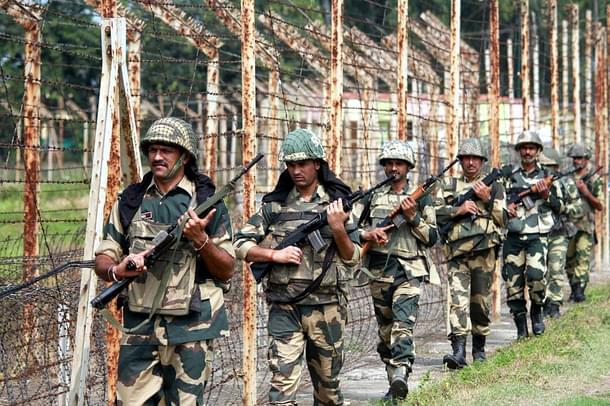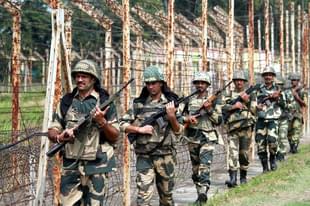Defence
One Year Since Surgical Strikes: India’s Counter To Pak Proxy War Vindicated, But More Trouble Should Be Expected
Syed Ata Hasnain
Sep 29, 2017, 09:00 PM | Updated 09:00 PM IST
Save & read from anywhere!
Bookmark stories for easy access on any device or the Swarajya app.


What does one do with an incorrigible neighbouring country which has no qualms about its international image and freely uses terror as a weapon to try achieving its strategic goals? You fight back in the same way, counter the instruments the neighbour uses and prove it the villain of peace in the eyes of international community. The last one year in Kashmir after the Uri attack by Pakistan-sponsored terrorists, and the surgical strikes by the Indian Army, has seen an effective response from India, although there have been difficult times that arose immediately after the event.
It may be just by coincidence that James Mattis, US Secretary of Defense was in Delhi in the last few days as a follow up to the various proposals after the visit of PM Modi to meet President Trump. The local media news concerning defence and security would have been put up to him by his staff. He may also have been briefed on the Indian Army's achievements in Kashmir in the last one year, but the few events during his visit would have made the briefings quite believable and hopefully sent a message about India's strategic capability, tolerance, and patience. Hopefully, the attention of the US Defense Secretary would have been drawn also to the number of times when different leaders from Pakistan have given threats related to use of nuclear weapons as if these weapons were routine instruments of war fighting.
Recount and analysis of some of the events may help in further analysis.
Qayoom Najjar, the former Lashkar-e-Islam chief was killed on 26 September in an infiltration attempt at Lachhipura on the north bank of the Jhelum in the Uri sector. He was attempting to infiltrate via the 12,000 feet high Garaja Gali. Having fallen out with the Hurriyat leadership two years ago, Najjar had drawn its ire for the targeting of mobile towers in north Kashmir. He left the Valley thereafter and it is learnt that he had been accepted back by the Hizbul Mujahideen (HM) in a leadership role which he was returning to assume. Terrorist leaders have been unsafe for most of the last one year and it is their elimination which has given a leg up to the security forces (SF) in the degree of domination that the latter have achieved. Operation All Out jointly launched by the SF has, besides targeting the leadership, continued sustained pressure against terror groups through better networked intelligence, return to some older methods of operations such as cordon and search operations, and ensuring much lesser operating space for terrorists, through effective population control measures.
In an attempt to repeat the Uri attack four terrorists successfully infiltrated in the South Jhelum sector on 25 September. Their objective appeared to be the gun areas on the Uri Kaman road in a demonstration which would have been terribly embarrassing for the Army. Artillery gun areas are sacred and in peace or war a successful raid on any of them is considered sacrilege. Fortunately, the terrorists, all in uniform were sighted near the road, swiftly encircled and eliminated preventing a potentially disastrous situation from emerging. However, it leaves behind enough food for thought and analysis on why the South Jhelum sector has suddenly become so porous. In the Nineties it used to be highly vulnerable but in the last fifteen years or so it was not considered a viable area for operations involving infiltration or strike operations.
The third action in the Valley was at Keran where a small scale action by a Pakistan Army Border Action Team (BAT), a term with which the Indian public is quite familiar with, attempted to target a small post of the Indian Army. Keran is one of the remotest areas beyond the Shamshabari range and hugs the Nilam river. Response in such an area will always be difficult and time consuming. Yet the Indian troops were alert and repulsed the BAT with injuries inflicted on some of the offenders. There has been no repeat attempt but it is unlikely that Pakistan will accept defeat in three areas with any grace. The LoC and its vicinity is going to witness more violence in the future.
The dismal conclusion in the above analysis has more reasons than just Pakistan's king sized ego. It's Pakistan's inability to strike through big operations in the hinterland after Operation All Out's success. Like in 2015, the inability to infiltrate and execute major strikes led Pakistani sponsors to conduct shallow operations along the LoC. That is one of the reasons why areas such as the Jhelum Valley suddenly shot into prominence; they were converted from areas of transit operations to areas of main operations. Uri's vulnerability is also explained by this. If this analysis is correct, India should once again expect activation of the Jammu-Pathankot segment. There, in one night, it is possible to infiltrate and conduct major strikes at vulnerable targets along the National Highway. It calls for immediate alert of the BSF anti infiltration grid, reinforced to an extent by a few army troops. HQ Western Command needs to be alert and discuss contingencies for the entire belt from Gurdaspur to Jammu.
It is not out of order to link the events in the west with those in the east. On 27 September, with reliable intelligence from well networked sources, the crack 21 Special Forces unit, along with some Assam Rifles troops, laid a strong ambush near the India-Myanmar border in Mon district of Nagaland. The intelligence revealed that a large group of the renegade National Socialist Council of Nagaland (NSCN-K) was attempting to enter Nagaland from Myanmar. In a professionally conducted action, reminiscent of Operation Golden Bird which was conducted a few years ago, the Army could inflict heavy casualties on the group which returned to the Myanmar side; there were no casualties on our side. The operation should reinforce perception about India's military capabilities and ability to fight for her interests.
All the events above reflect that there is no dilution in the capability of the Indian Army to undertake suitable operations to thwart Pakistani proxy designs or any other anti-national activity. However, in such operations there are highs and lows, good days and bad days. Bad days can be minimised but they cannot be completely negated. Pakistan has no doubt been placed in a quandary. It is learnt that it's army has studied India's recent handling of the Doklam stand off and was surprised about the manner in which the Indian Army and Indian diplomacy functioned through the crisis. All this is going to force Pakistan's deep state and its new found ally, the new civilian leadership, on the back foot. In reality, it is the success that makes the situation more dangerous for India because the response could well be knee jerk in nature. General Bajwa is known to be a little more pragmatic than his predecessor General Raheel Sharif, but if the political leadership under Pakistan Prime Minister Abbasi is attempting to score a few brownie points, as was evident in the UN General Assembly, then India definitely needs to be on high alert for a likely resurgence of violence in Kashmir, pre-winter.
Almost all analyses of the surgical strikes have correctly deduced that these were a one-time offensive measure which cannot easily be replicated. However, this point blank deduction needs a tempered explanation lest it sends an incorrect message across to Pakistan's strategists. It would be most immature on part of India to threaten surgical strikes for every terrorist strike we suffer but equally it would be even more immature if we decided that these type of operations or related actions cannot be launched again with different concept of operations and rules of engagement. It's not as if Pakistan has all the options and we have none. The Indian public is usually unable to comprehend the nuances of such standoffs between nations. India definitely has options, and quite a few at different depths, with different types of objectives and with different types of weapons. Details need not be spelt out but Pakistani proxy war planners should get the message loud and clear. India is not going to sit idle. There is much more to time and place of own choosing than what the Pakistan think tanks or planners may care to assume.
The writer is a former GOC of India’s Srinagar based 15 Corps, now associated with Vivekanand International Foundation and the Institute of Peace and Conflict Studies.




